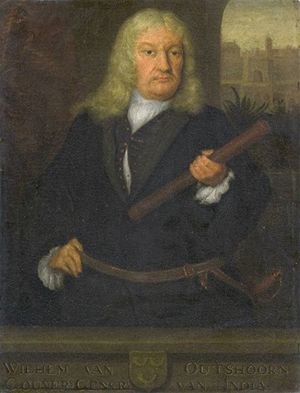This Day in History: February 22, 1707
Additional Date: February 22, 1707
On 22 February 1707 a young man on horseback raced through the streets of Stellenbosch shouting "Victorie! Victorie!" - a sign that the Burghers were victorious in their struggle against Cape Governor Willem Adriaan van der Stel and his officials.
Background: Who were the 'burghers'?
By 1657, the market for work in the Cape, under central direction by the Vereenigde Oost-Indische Compagnie (VOC), was saturated. Therefore, Jan Van Riebeeck proposed that married men were released from their contracts and given farms of their own to cultivate. This development was approved by the VOC, and these independent farmers become known as 'free burghers'.
The Struggle
When the first free burghers began farming, the Company issued strict instrucÂtions that officials were not allowed to supplement the market with food, as the burghers, were dependent on food production for their survival. However, under Simon van der Stel - and later his son, Willem Adriaan van der Stel - land was given to High officials and the governor's brother, a free burgher. By 1705, land that comprised a third of the farming area of the colony was owned by twenty Company officials. They had therefore established a monopoly in the sale of wine, meat, fish and wheat.
The wealthier burghers felt the most threatened by this monopoly. Henning Husing and Adam Tas sent a petition to Amsterdam via authorities in Batavia, accusing the Cape officials of misconduct. The Lords Seventeen (controllers of the VOC) demanded an explanation from the Cape officials. OutÂraged, Cape officials sent instigators of the burgher rebellion to Holland on the return fleet. Tas was arrested and Jacobus van der Heiden - one of the most intractable witnesses - was thrown into the 'Dark hole' cell in the Castle.
Subsequently, leading Cape burghers lobbied against the Cape officials in Amsterdam, and the colony became embroiled in turmoil. In early 1707, the Cape received the news that the Lords Seventeen in Amsterdam were repealing the authority of Van der Stel and other officials, including Johannes Starrenburg, the landdrost of Stellenbosch. They forbade all officials to own property or trade on the Cape market, and insisted that they surrender their land.
This was a resounding burgher victory. A coalition of burghers had overpowered the officials and firmly established their role as the sole suppliers of food in the Cape. In recognition of these circumstances, the young Hendrik Biebouw and his friends - who lived on the periphery of burgher society - staged a celebration in the hamlet of Stellenbosch. These festivities would have gone unnoÂticed, except for Biebouw's strong identification of himself as an Afrikaner, at least 80 years before the burghers commonly used the term for themselves.
